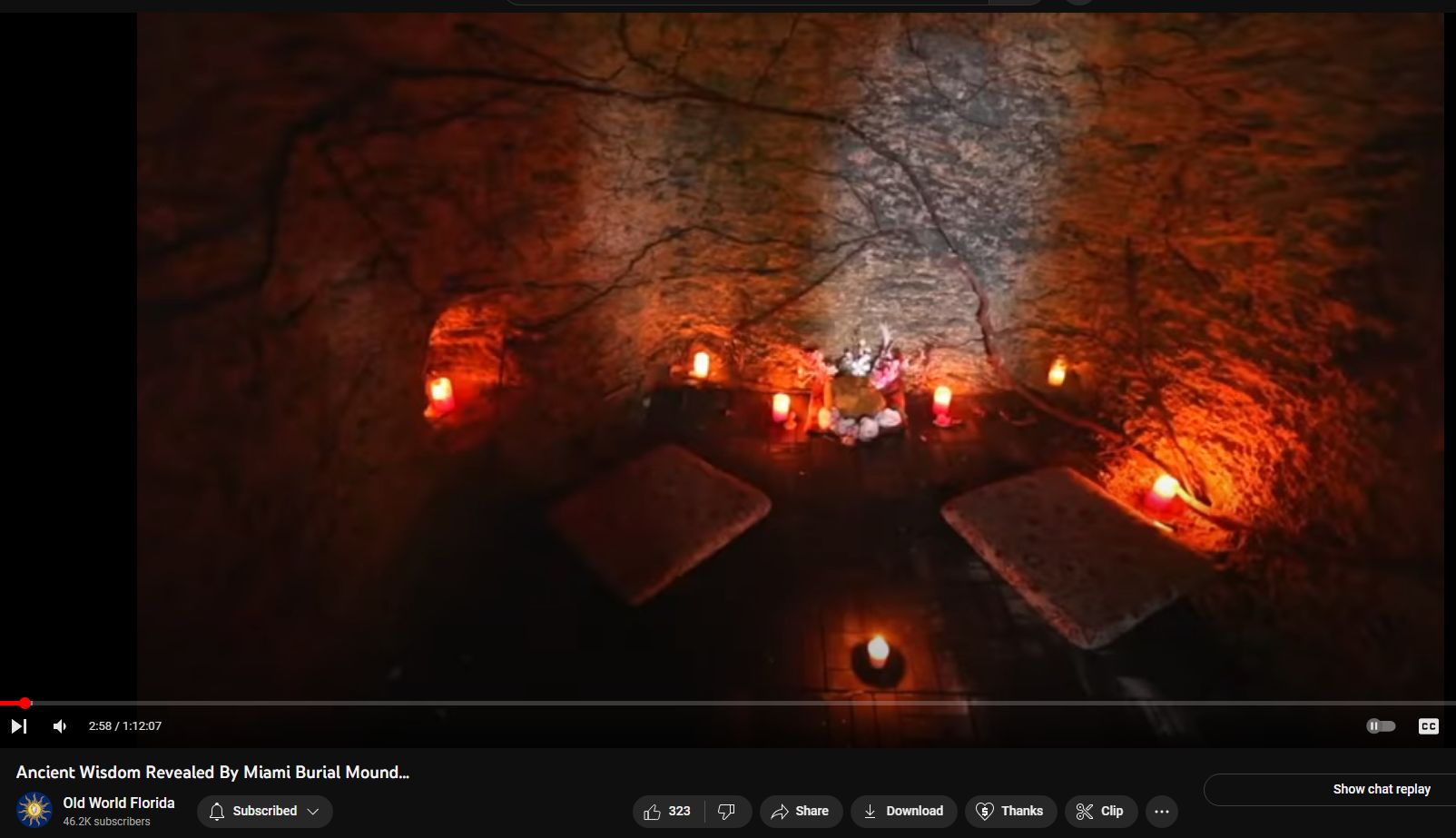Ancient Wisdom Revealed By Miami Burial Mound

From the comments: “You may be explaining interstitial reality / moments / energies. In true high-end audio engineering (and high-energy particle and field physics) exists theory that metal crystalline / matrix structure imparts upon the signal a kind of digitalia meshing, that the bends and breaks and angles are where the energies flow, and the “film frames” you describe equate to the crystals, the portals or join-areas being oft-interfaces mixing energies, capturing them in ‘frozen’ moments…the ‘echoes’ or ‘shadows’ from such mixing leading to mixed/increased energy flow, or individual awareness of such. Alex Dumble of guitar amplifier infamy refers to the “crystalline lattice” nature of semiconductors versus vacuum tube / electron-valve amplification. Numerous others have clued in to the plasma as being an aetheric, higher (and audibly superior) realm whilst the physical is lesser in that it is inescapably ‘digitized’ by the untold breaks in the medium. Of note is that Jesuits and ilk have long admired / sought to impose cellularity / atomicity unto all things, as doing so makes them capturable, catalogueable, controllable; otherwise, the analog remainder is effervescent, plasmodic mush. DAN WINTER delves into this. CARDAS AUDIO with its patented Fibonacci-sequence-sized strands in audio cable figures in. Cryo-frozen vacuum tubes (and lately capacitors) figure into the interstitial vs crystal-mode. Monster cable famously introduced its “oxygen-free-copper” which was an early and arguably successful attempt to reduce the number of digital / crystalline barriers that signal impulses must encounter, or alternately to increase the uninterrupted interstitial pathways amongst the crystal lattice nano/pico-barriers. This IS the edge of esoterica. Love it; keep going, man!”
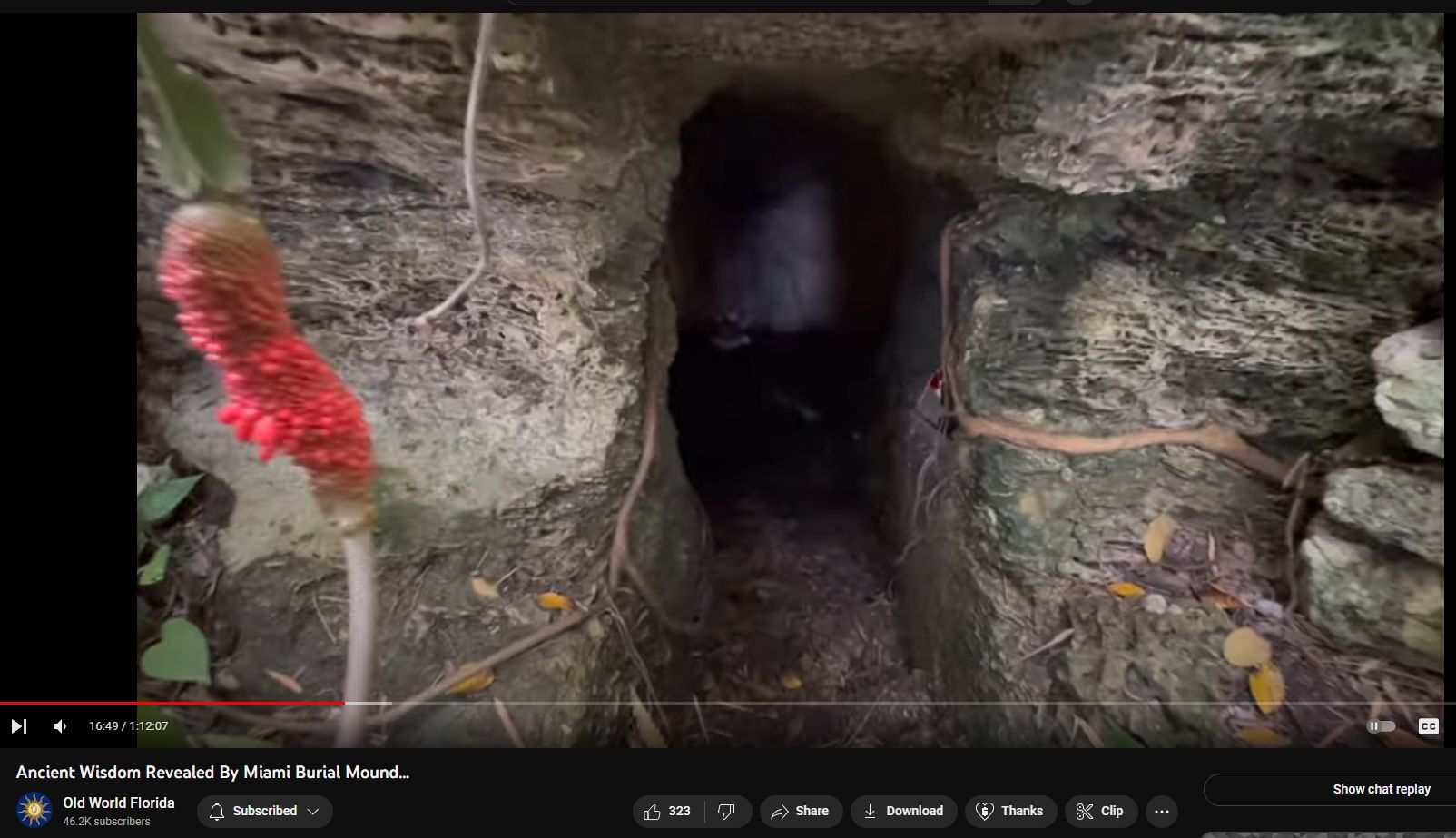
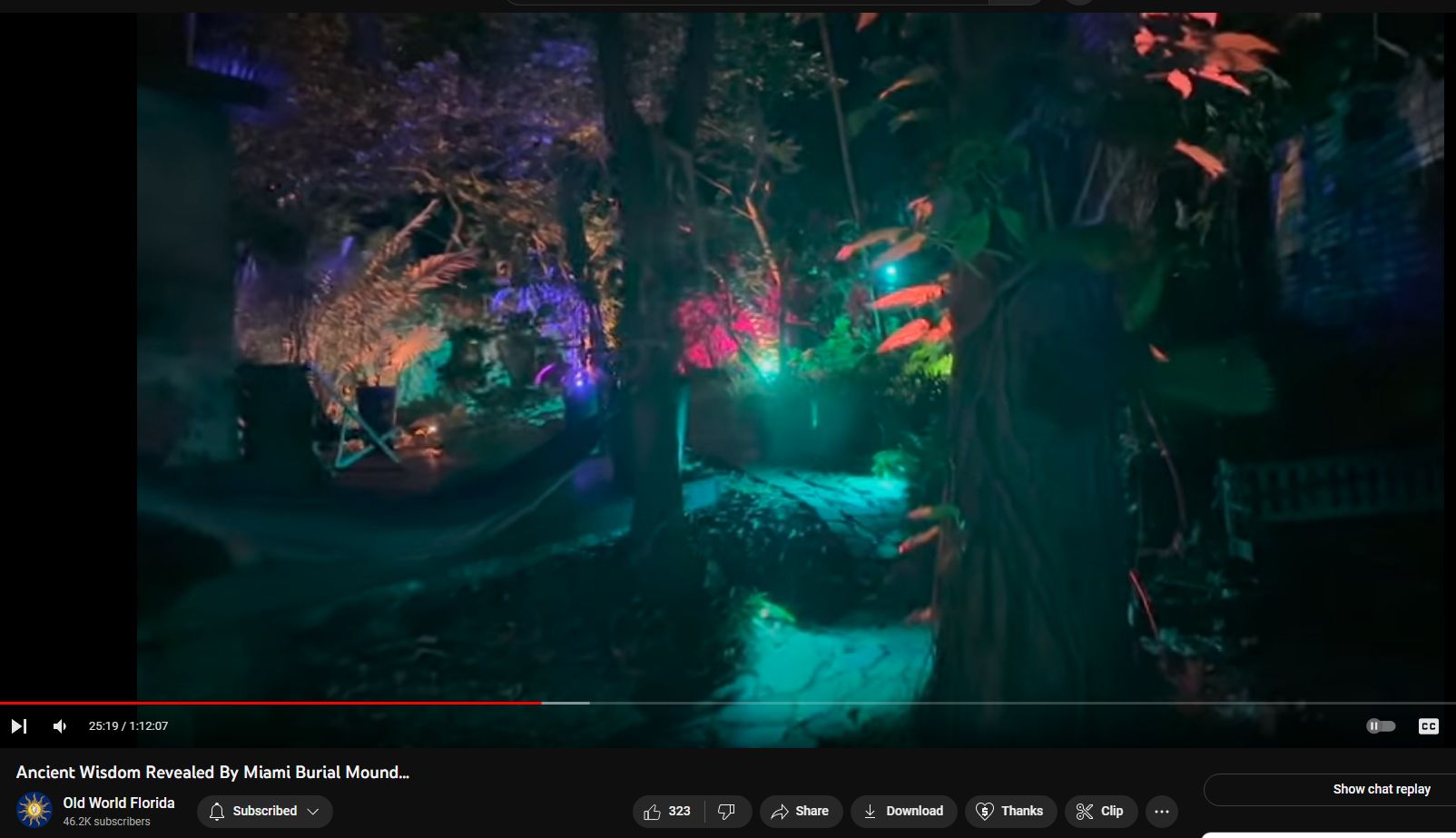
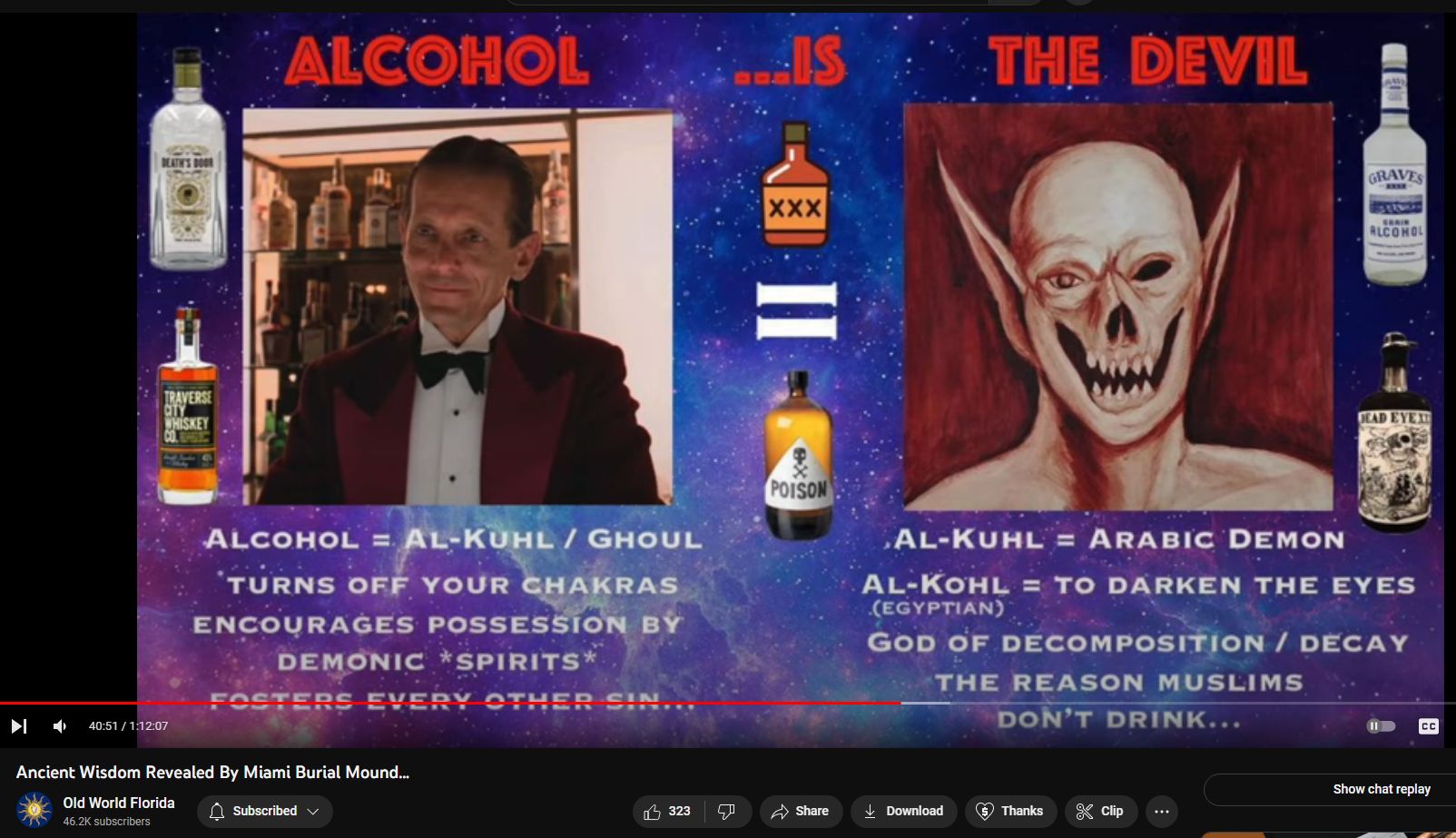
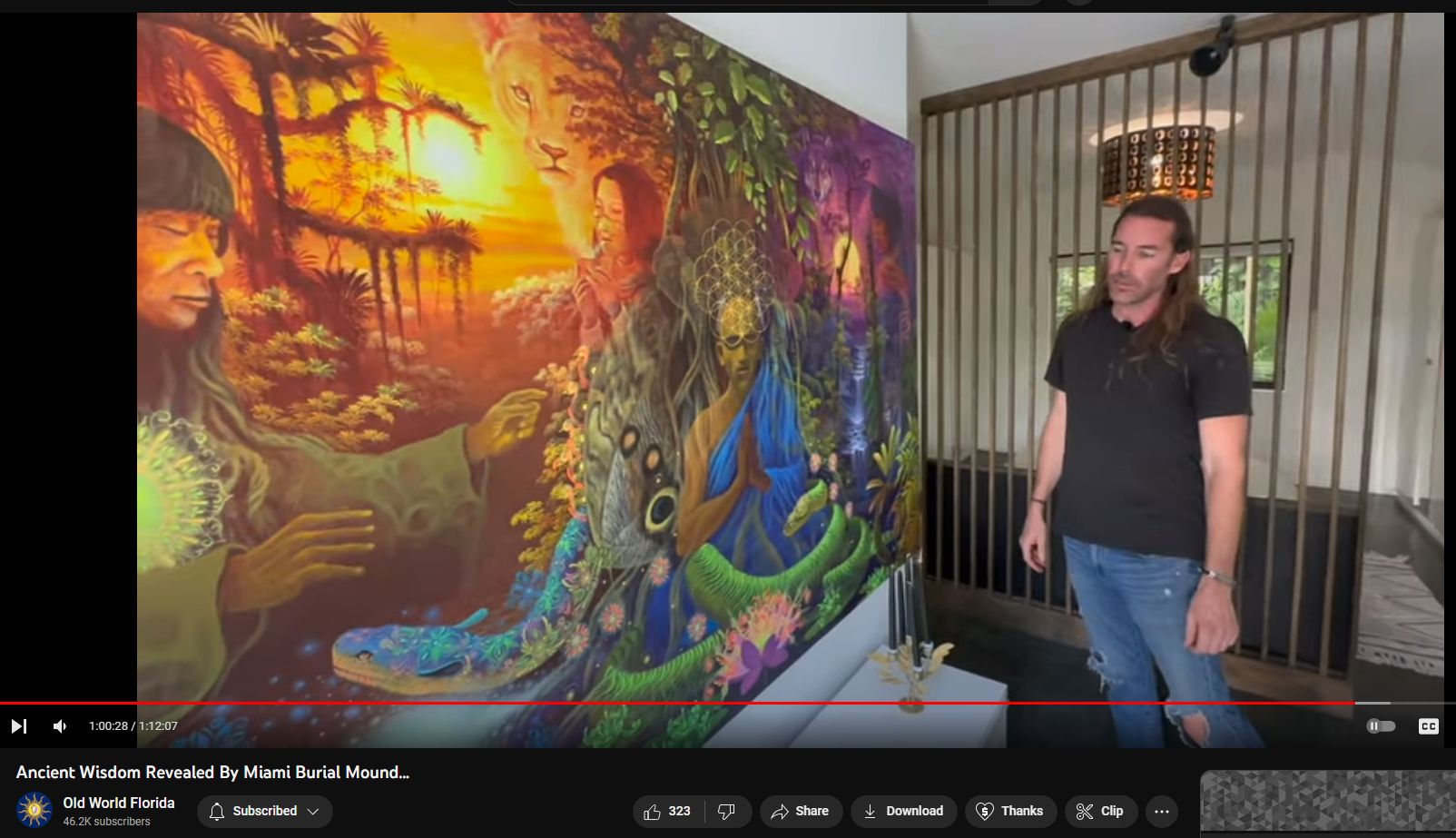
CGPT — MIAMI BURIAL MOUND
The Miami Circle, also known as the Miami River Circle, Brickell Point, or the Miami Burial Mound, is a significant archaeological site located in downtown Miami, Florida, at the mouth of the Miami River. Discovered in 1998 during routine site surveys for a new condominium development, the Miami Circle revealed itself to be a prehistoric structure with an intriguing array of holes cut into the limestone bedrock, forming a perfect circle 38 feet (about 11.6 meters) in diameter.
### Historical Significance
– **Age and Origin**: Radiocarbon dating and other analyses suggest that the site dates back approximately 2,000 years, making it an important artifact of the Tequesta tribe, one of the earliest known native groups in the Southeast Florida region.
– **Structure and Artifacts**: The circle contains 24 holes or basins carved into the bedrock, along with numerous other smaller holes believed to be postholes for supporting structures. Artifacts found at the site, including shell tools, bone implements, and pottery shards, provide valuable insights into the Tequesta’s way of life.
– **Cultural and Spiritual Importance**: Some archaeologists and scholars believe the Miami Circle was of spiritual or ceremonial significance to the Tequesta, possibly serving as an astronomical observatory or a structure for religious rituals.
### Preservation Efforts
The discovery of the Miami Circle sparked a significant public outcry and mobilization to save the site from destruction. Preservationists, Native American groups, archaeologists, and the general public rallied together, leading to the state of Florida purchasing the site for $26.7 million to preserve it as an archaeological park.
### Current Status
Today, the Miami Circle is preserved as part of the HistoryMiami Museum. It is recognized as a National Historic Landmark, highlighting its importance as a cultural and historical treasure. The site serves as a reminder of the rich indigenous history of the area, long before the arrival of European settlers and the development of modern Miami. While public access to the site itself may be limited to protect its integrity, the Miami Circle continues to be an object of study for researchers and a point of cultural pride for the community and Native American groups connected to the region’s early inhabitants.
The Miami Circle, also known as the Miami River Circle or Brickell Point Site, is an archaeological site located in downtown Miami, Florida, along the southern bank of the Miami River. It consists of a perfect circle of basally truncated posts or holes cut into the limestone bedrock, forming a circular pattern with a diameter of approximately 38 feet (11.6 meters). The site was discovered in 1998 during the construction of a high-rise condominium building.
The Miami Circle is believed to have been created by the Tequesta, a Native American tribe that inhabited the area before the arrival of Europeans. Radiocarbon dating of artifacts found at the site suggests that it was constructed between 500 and 2000 years ago, although the exact purpose of the circle remains uncertain.
Several theories have been proposed regarding the function of the Miami Circle. Some archaeologists believe that it may have served as the foundation for a structure, such as a Tequesta council house or ceremonial lodge. Others suggest that it may have had ritual or astronomical significance, possibly serving as an observatory for tracking celestial events or a sacred space for religious ceremonies.
The Miami Circle is considered a significant archaeological site due to its rarity and the insights it offers into the prehistoric indigenous cultures of Florida. It has been designated as a National Historic Landmark and is protected under state and federal laws. Efforts have been made to preserve and interpret the site, although its location in a densely developed urban area poses challenges for its long-term conservation.
